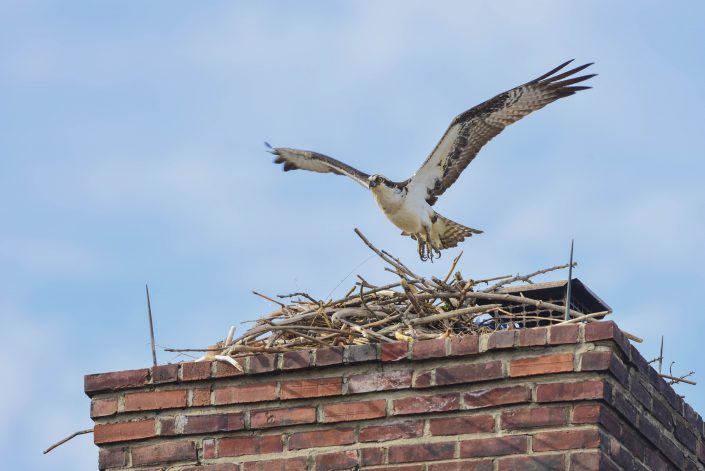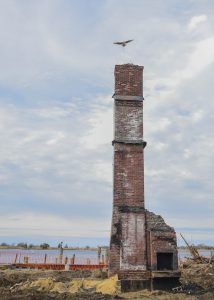Living with ospreys in New Jersey
New document provides guidance to homeowners and landowners with osprey nest issues and focuses on the use of UAVs around active nests
by Ben Wurst, Habitat Program Manager

In New Jersey, we’ve seen the osprey population grow to an estimated 600 nesting pairs in 2015. As the population continues to grow, work to identify, protect, and remedy problem nests is crucial for their long term survival. Each year many new young adults return to their natal areas to find suitable areas to construct nests. Ospreys have a high level of site fidelity and usually return to the same areas where they originated (females do tend to wander more). A suitable nest site for an osprey is a high structure near water, usually away from human disturbance. However, ospreys can become more tolerant of disturbance if it can be expected and is not too close to their nest, especially for those birds that nest on tall structures.
Ospreys build large nests which can weight up to 200 lbs. They use sticks, grass, muck, seaweed, eelgrass, reeds, and often trash to build up their nests.
Around 75% of the state population nests on man-made platforms that are designed specifically for them. The other 25% is a mixture of nests built on other man-made structures and a few natural nests. Yes, ospreys do still nest in trees! But, trees that are suitable for them are few and far between. A suitable tree for an osprey is a standing dead tree (snag) or a tree with a top that has broken off. As the population continues to grow and there are fewer nest sites available on platforms and few suitable trees, more nests are being built on man-made structures where problems can arise. Ospreys are being pushed to nest in areas that are not always ideal, like on utility poles, stadium lights, emergency sirens, communication towers, boat lifts, docks, and even houses. Nests on utility poles can cause power outages and sometimes the nest might catch on fire or an adult can be electrocuted. Nests on houses, docks and boat lifts often limit use of such structures unless dealt with properly, but active nests cannot be removed without consulting with experts.

In partnership with NJ Division of Fish and Wildlife’s Endangered and Nongame Species Program, we developed a new guidance document to help address problem nests. “Living with Ospreys in New Jersey: A guide for the removal, relocation, and placement of osprey nests” addresses the laws protecting ospreys, who are protected both federally under the Migratory Bird Treaty Act of 1918 and statewide under the Endangered Species Conservation Act of 1973. Both of these laws protect the nest, adults and the contents of the nest, eggs and young. It also gives guidance on what actions can be taken to access, remove, or relocate an active or inactive osprey nest on any man-made structure, including communication towers. Also included are directions on how to build and install an osprey nesting platform.
Lastly, it also provides some clear guidance on the use of UAVs near active osprey nests. UAV pilots must follow all FAA guidelines and not fly within 1,000 feet of any active osprey nest. To an osprey, a UAV looks like a potential predator. Ospreys will defend their nests and attack any potential predator at nest sites. Simply flying near a nest can add stress to birds and cause adults to fly off nests where their young are vulnerable to predation. Any pilot who flies within this area and pursues or harms an osprey or its young is in direct violation of the Migratory Bird Treaty Act. We ask that all UAV pilots use caution to protect the safety of our ospreys and other birds.
- Download “Living with Ospreys in New Jersey: A guide for the removal, relocation, and placement of osprey nests”
- View all known osprey nests and report a new nest on Osprey-watch.org